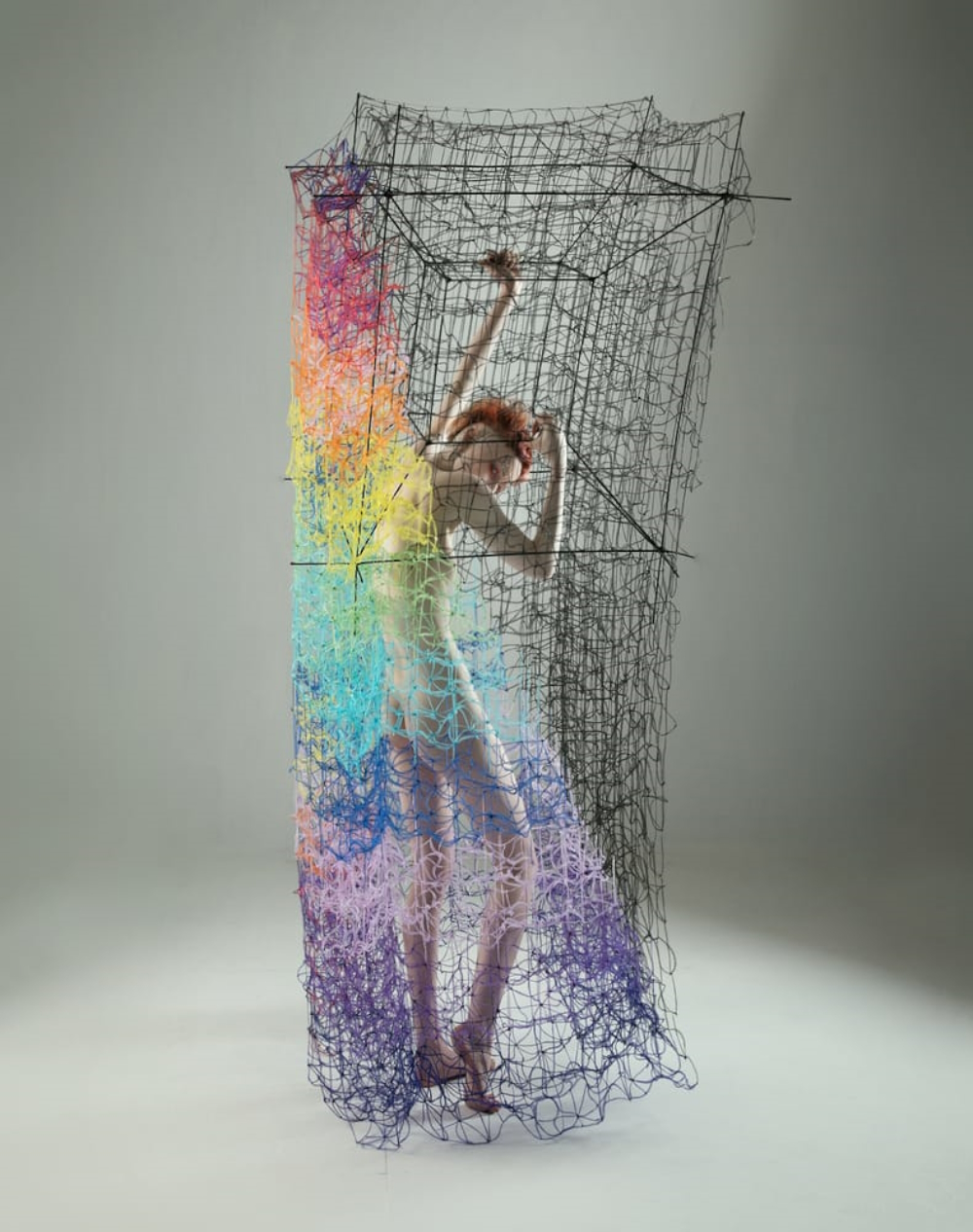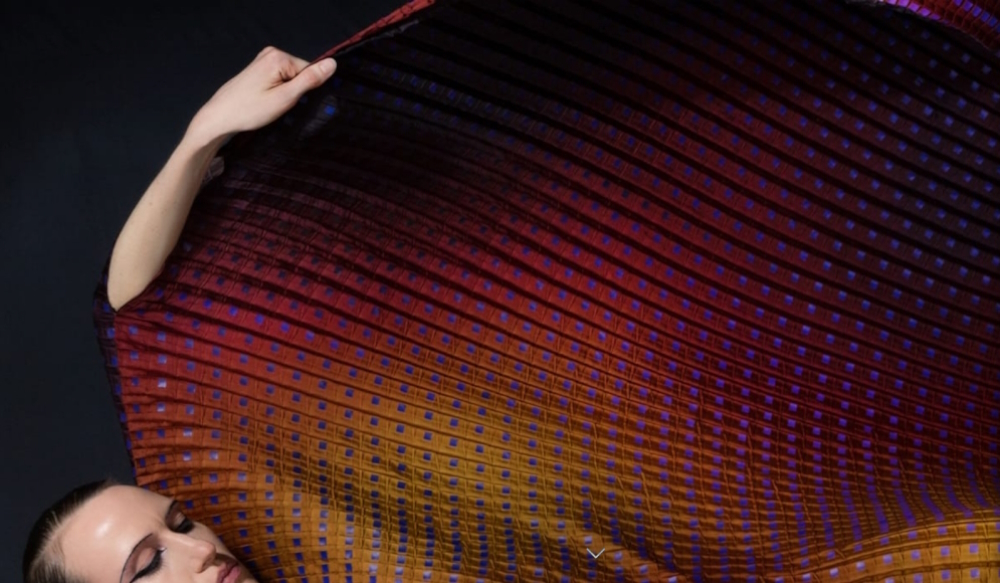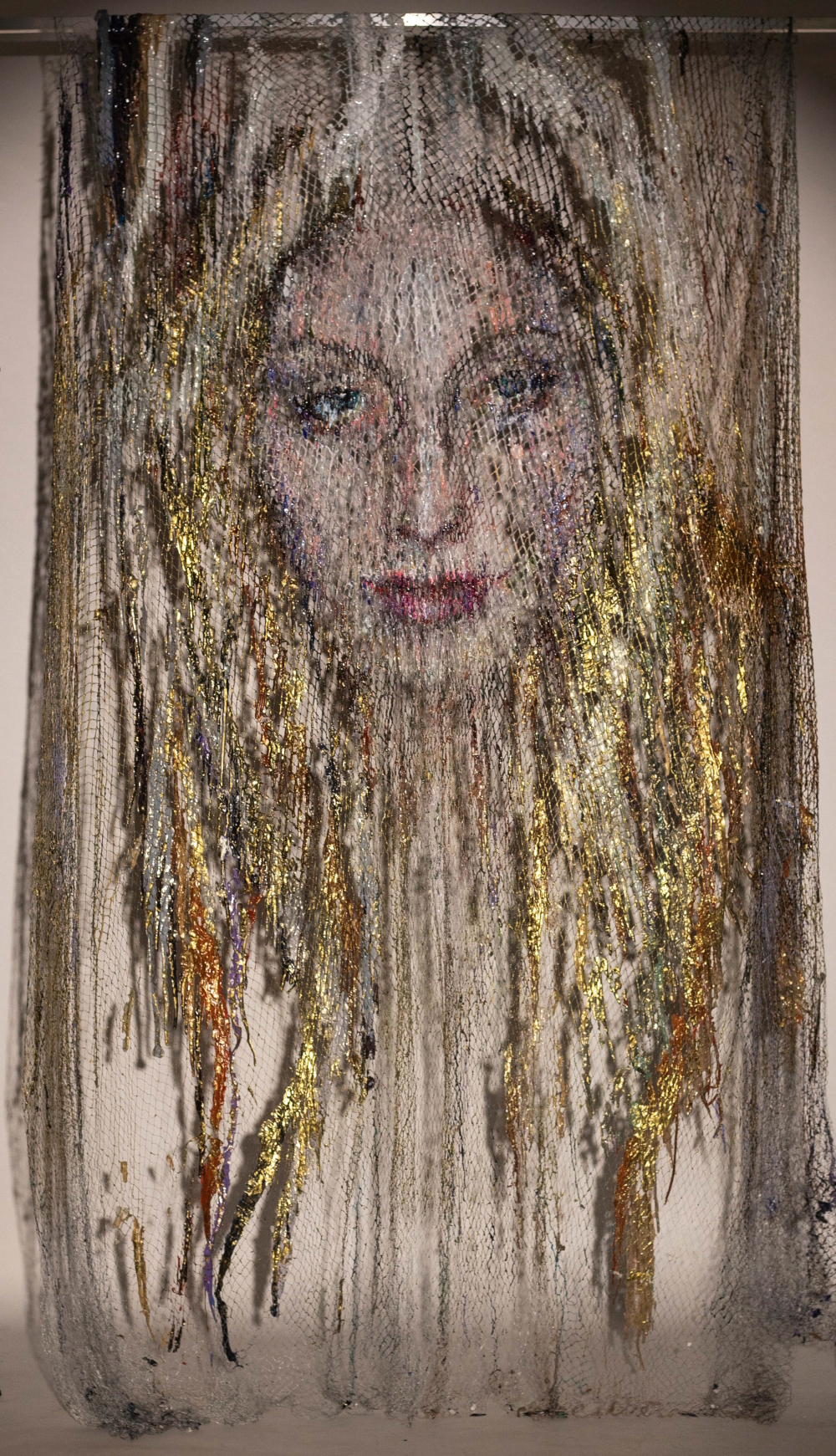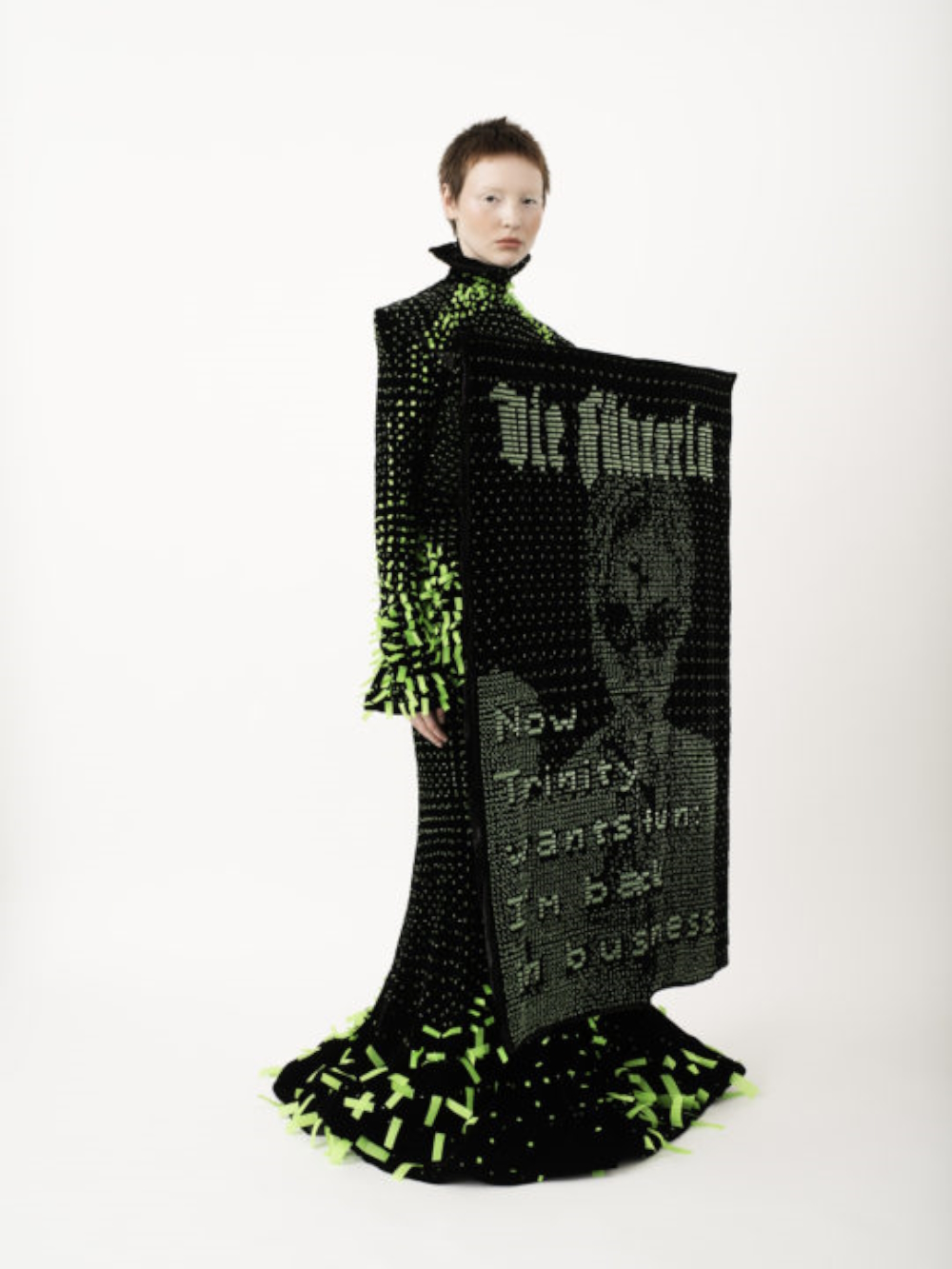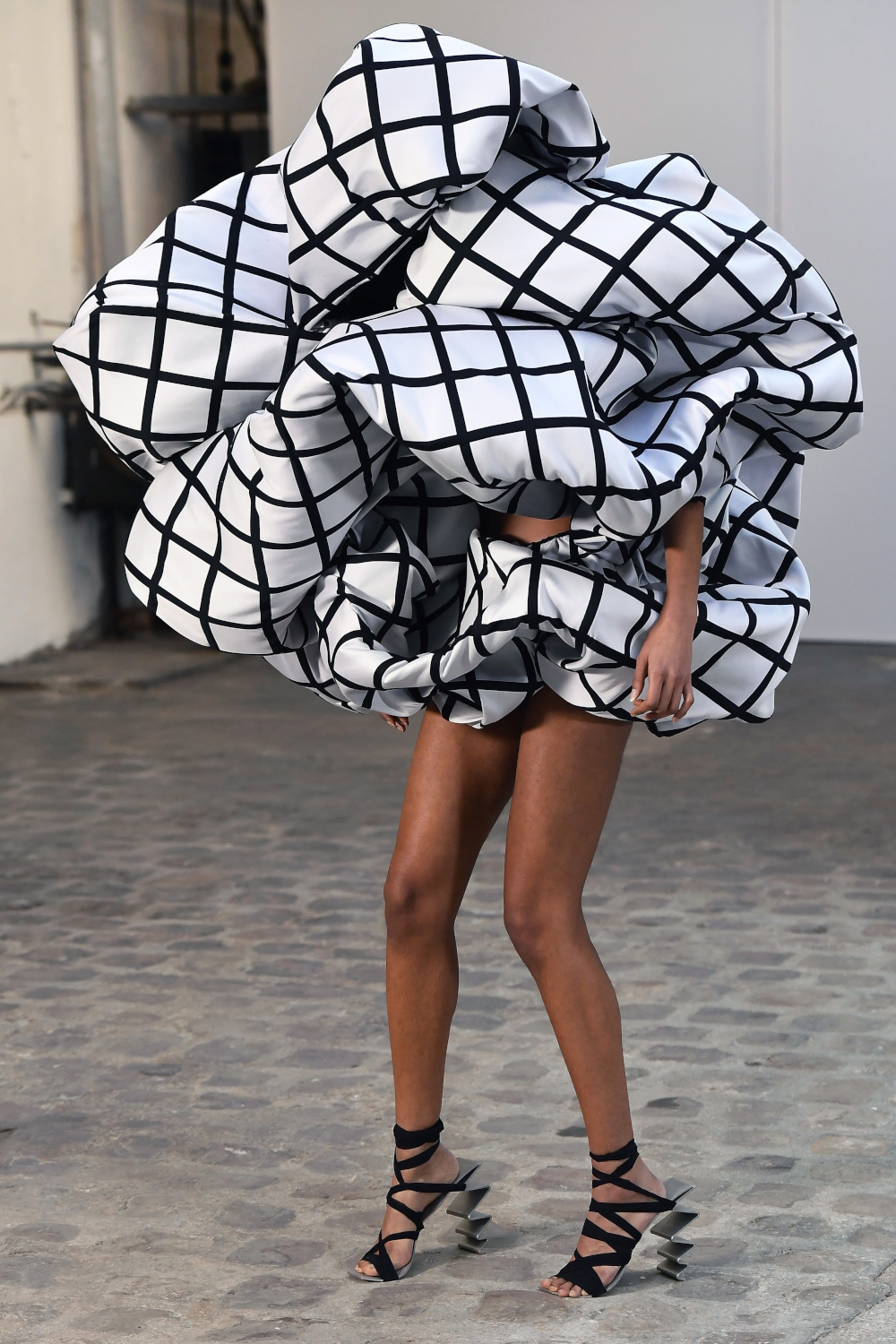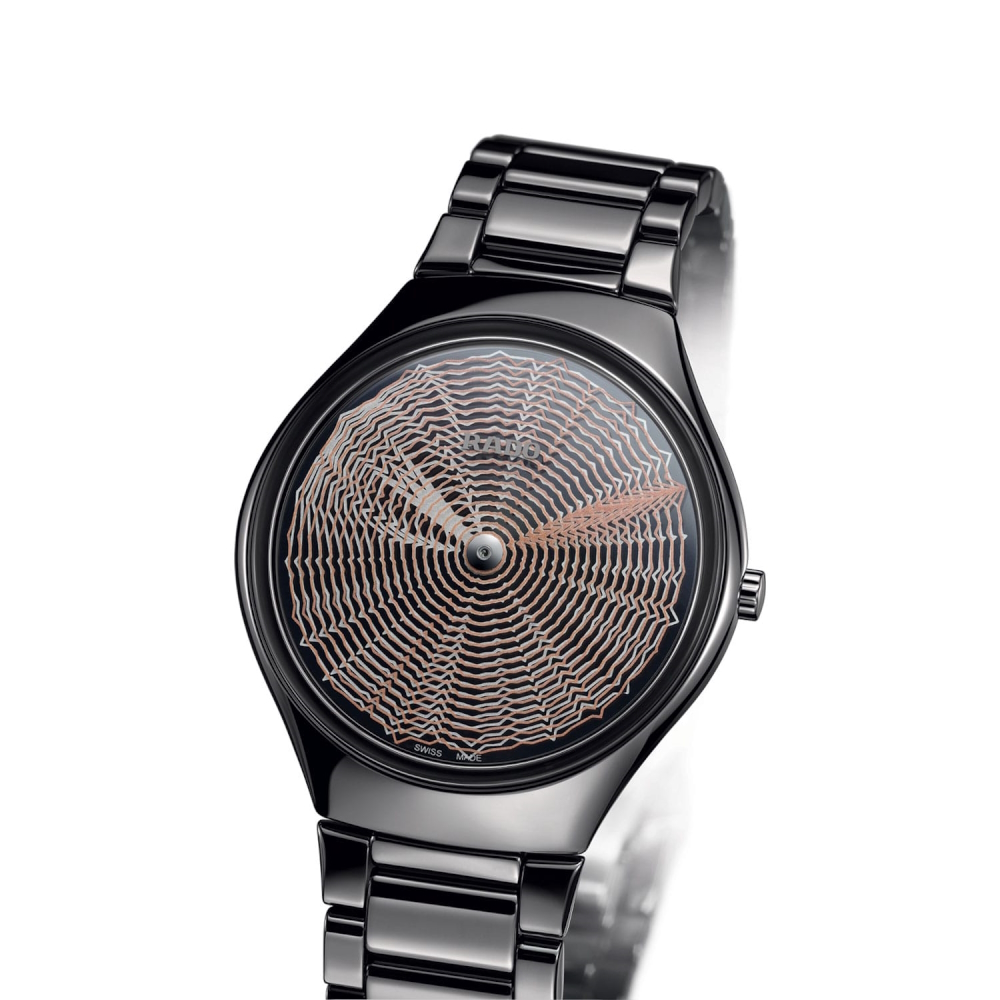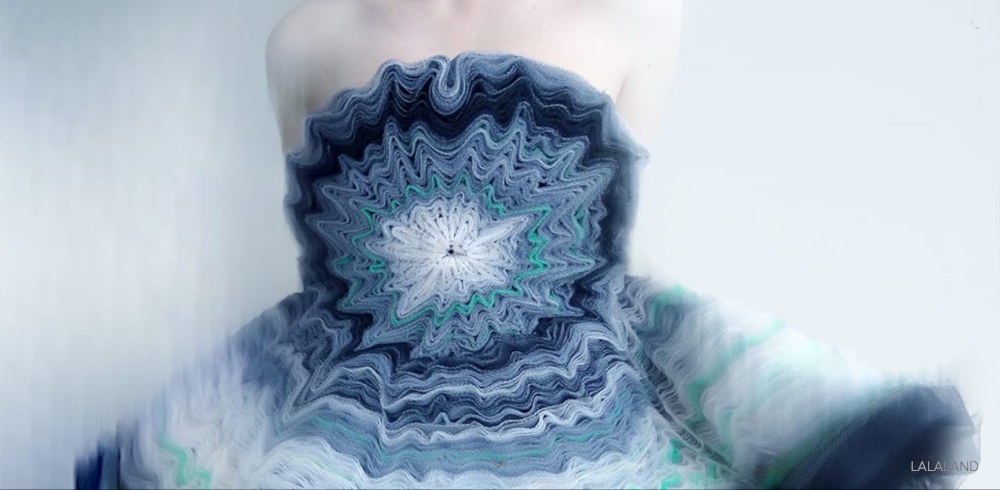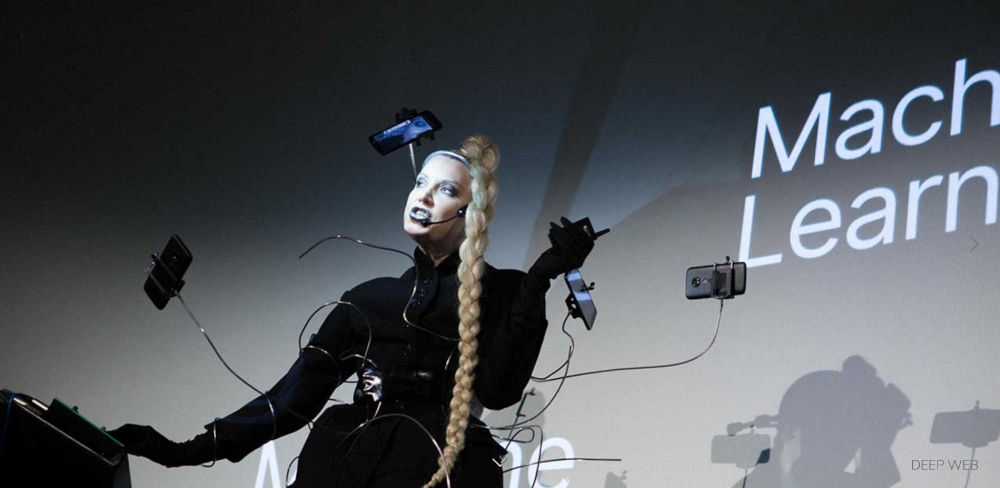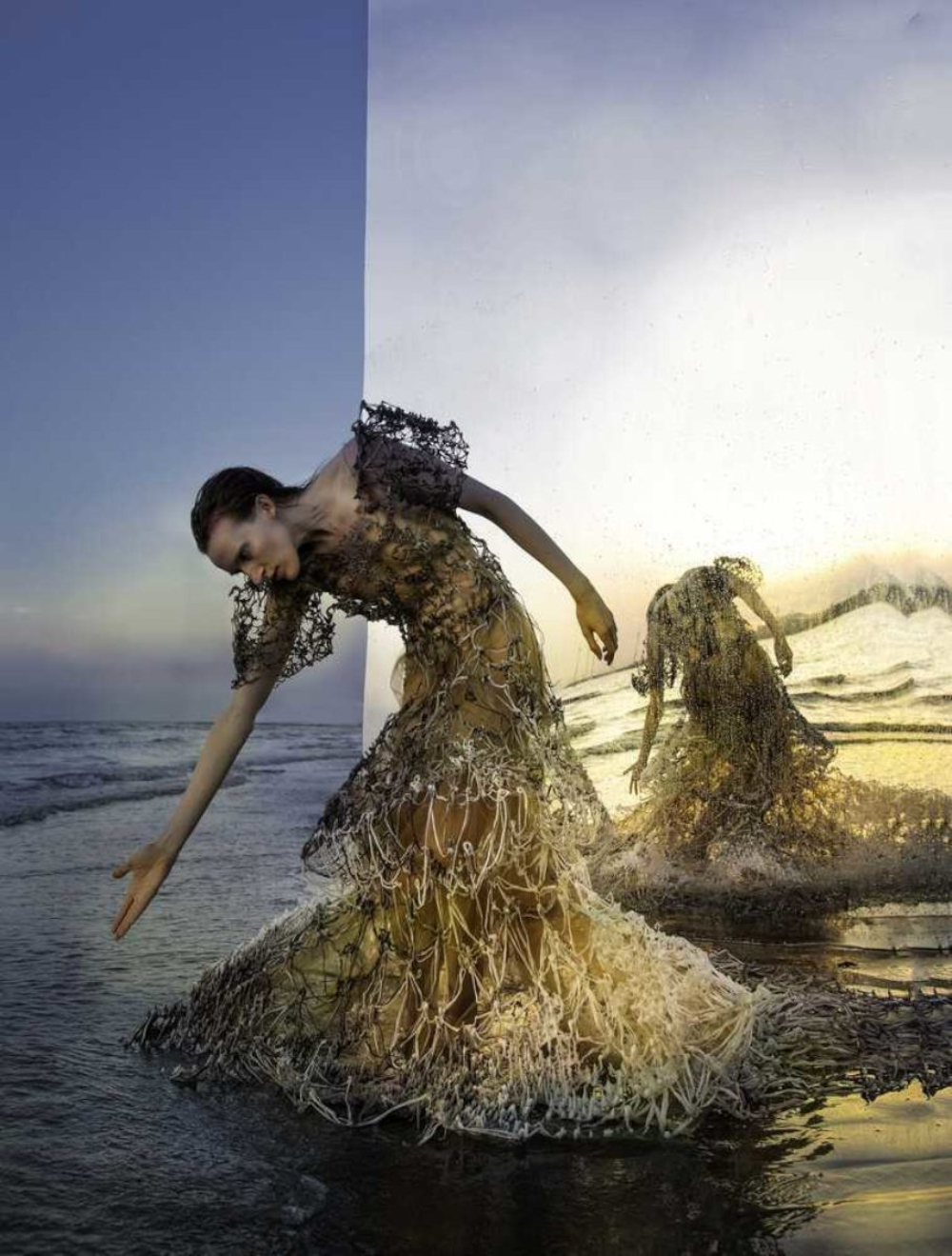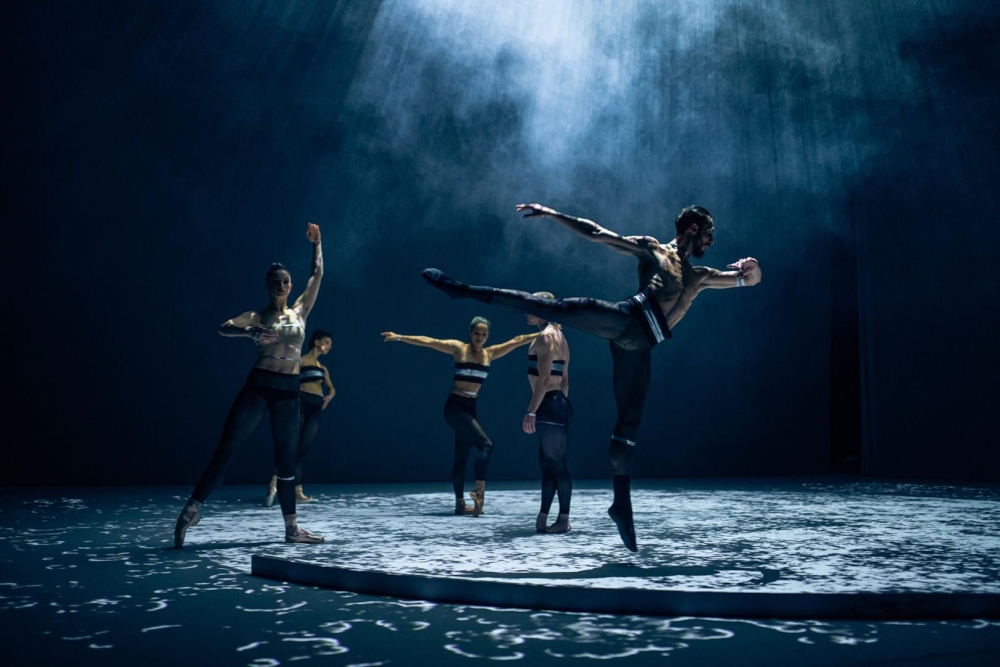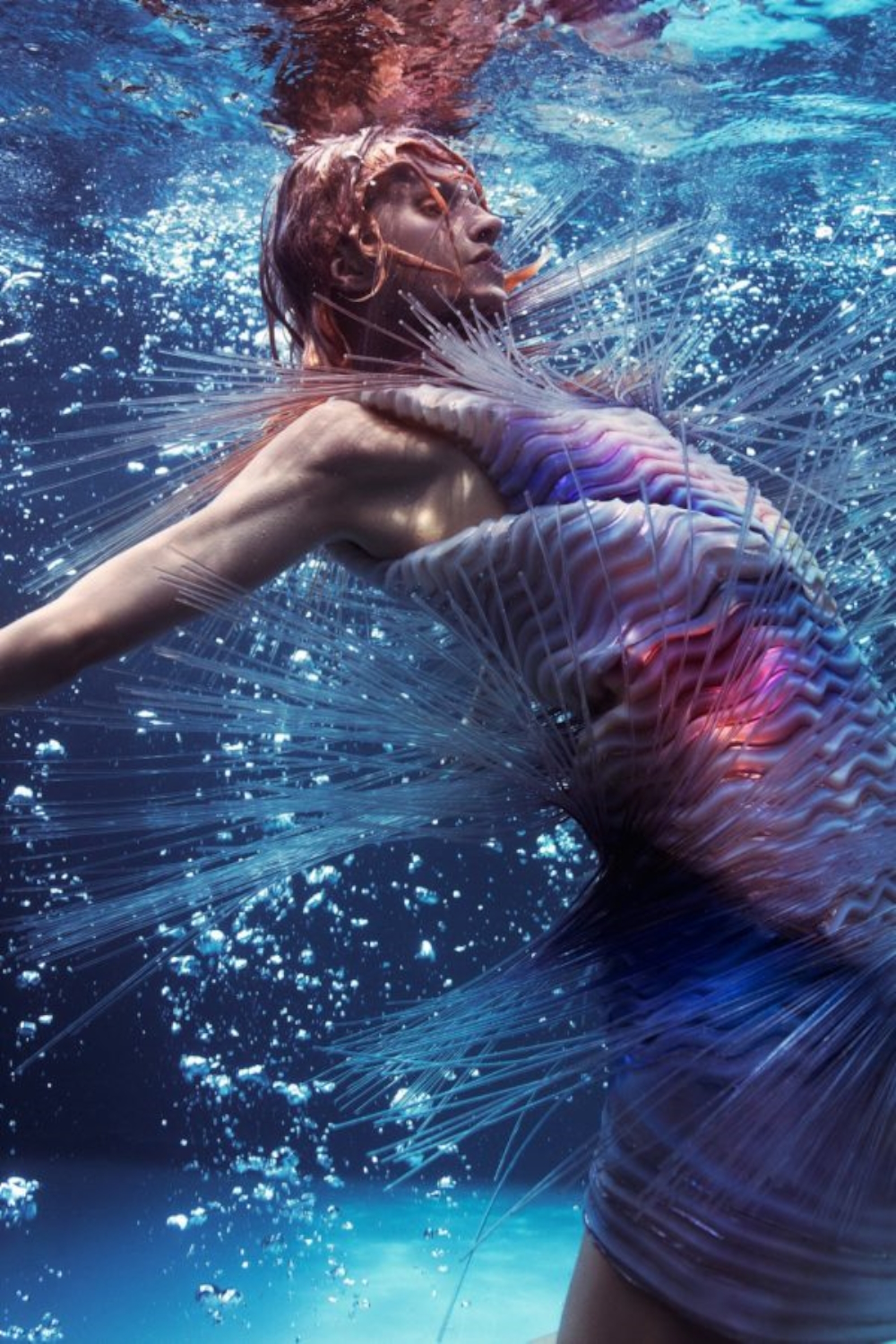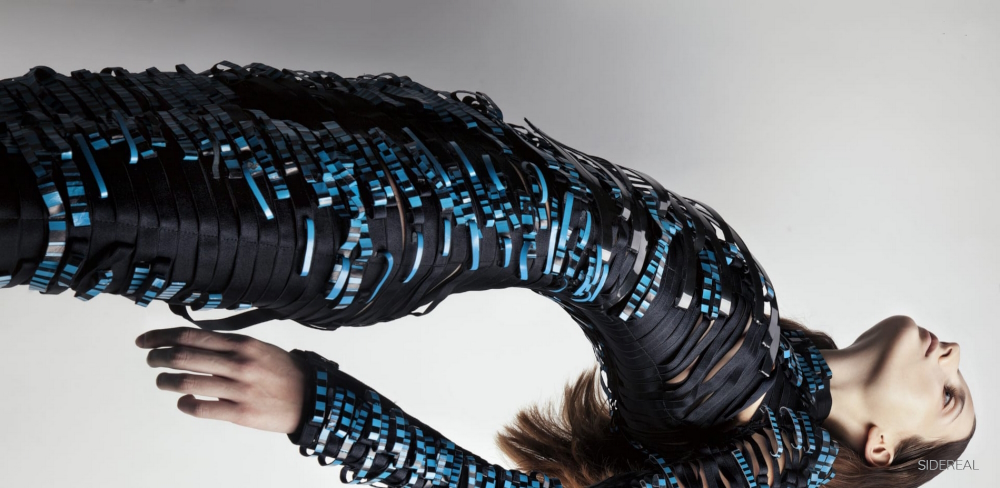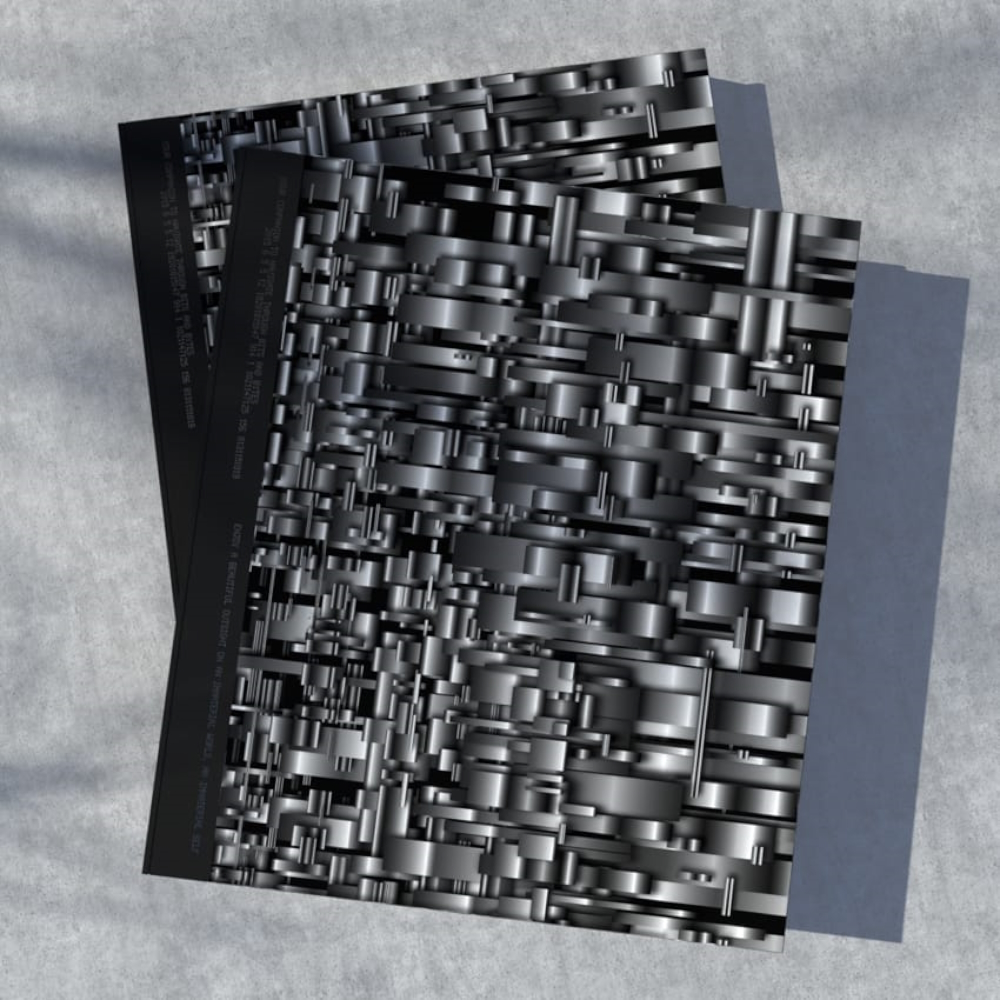Flora Miranda
awarded future-forward couturier and artist
Austria / Belgium
„She creates a completely new fashion utopia inspired by experimentation with materials, production techniques and processes. Her approach resembles interdisciplinary, artistic basic research for the future of fashion. In this way, she creates a completely new aesthetic with a surprising visual impact, which takes up an original, independent position in the fashion world dominated by quotations.“ The jury’s justification for the Outstanding Artist Award for Experimental Fashion Design at the first Austrian Fashion Awards appreciates the excellent position of this multi-facetted creative. Her versatile work includes seasonal performances at Paris‘ Haute Couture Week, designing a Rado-watch plus surprising cooperations with representatives of different professional disciplines like architecture, dance, interactive design and music. Such an extraordinary artist gets regular coverage in renowned mags like Vogue (Portugal), Harper's BAZAAR (Arabia) or I-D (UK). But the career of this visionary, who’s active at the cutting edge of fashion as an art term, digital worlds/virtual reality and science with the „focus on the human being, one‘s body senses and perception in an actual or virtual reality“ (artist’s website), might have taken a different direction too - if she had studied painting as considered first because of her family background.
Flora Miranda
awarded future-forward couturier and artist
Austria / Belgium
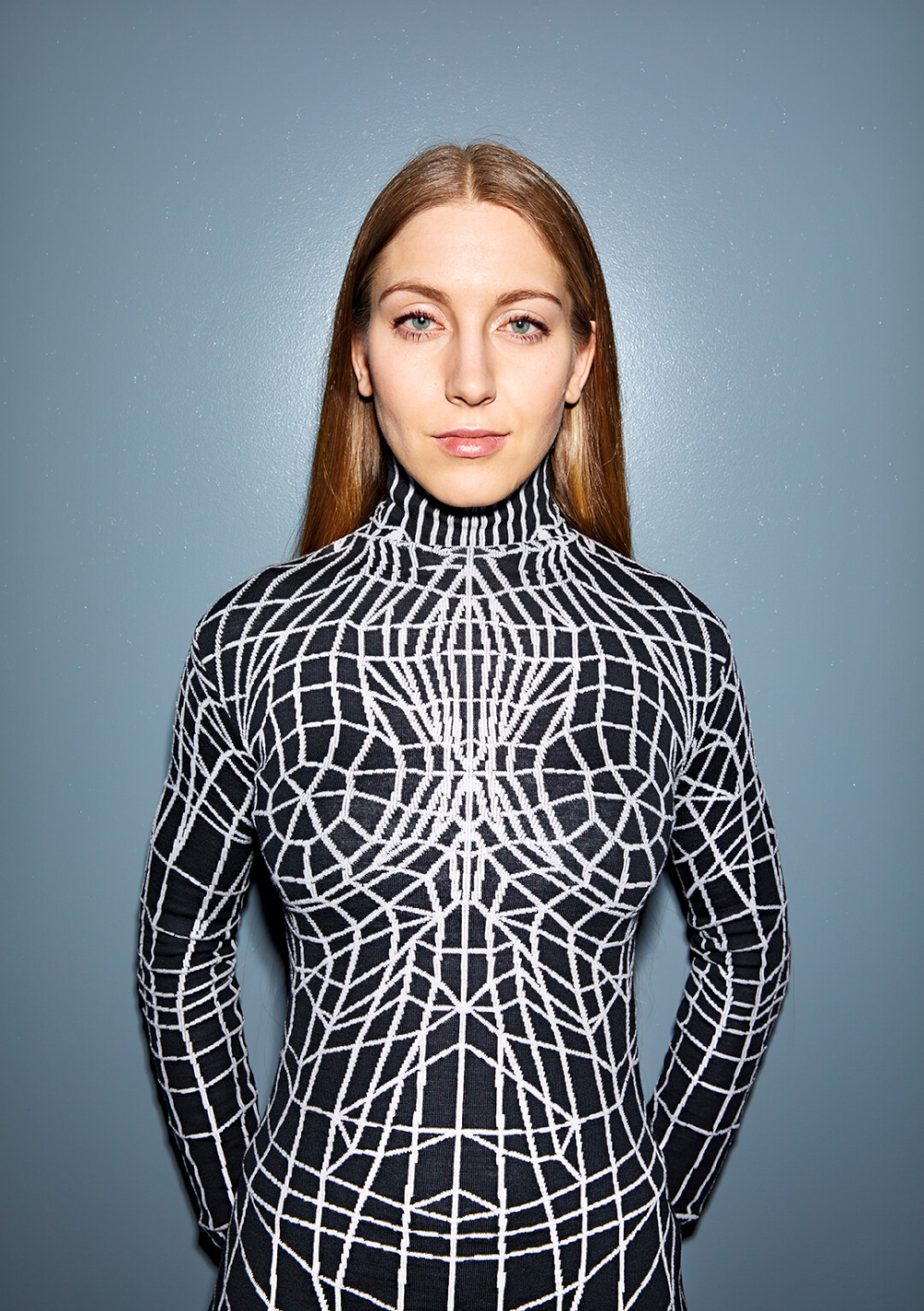
„The journey is the reward“. Konfuzius‘ famous quote fits well to Flora Miranda (Seierl). She was born into a family of artists (her father a studied musician and painter, her uncle and aunt painters as well) „with endless creative freedom“ (elkebackes-artdialog.com). The little kid (* 1990 in Salzburg, Austria) supported her dad building stretcher frames as a four-year old already. From early on she helped her pa at the composer forum being organized in memory for Anton Webern (1883-1945), who „wrote music in an aphoristic, expressionist style, reflecting his instincts and the idiosyncrasy of his compositional process” (Wikipedia). It was obvious that the girl being a very talented painter with a special love for the works of Old Masters like Vermeer and Van Eyck visited a musical high-school. When she was presented the book “Young Belgian Fashion Design” (2001) it showed her fashion as art and put an end to any previous plans of studying painting.
Famous fashion designers like Raf Simons (Dior, Calvin Klein, Prada), her mothers had told her about and she admired, had studied at the Royal Academy of Fine Arts in Antwerp. At the age of 18 Flora Miranda decided to move to the source of creativity in fashion. At “the avant-garde stronghold” (redbull.com) the young student became enthusiastic about silicone, “weaving silicone drops and threads as well as 3D printed parts into futuristic creations” (topos.orf.at).
Her graduate collection Sidereal_Immatereal_Ethereal „drew on the themes of teleportation and quantum physics to create futuristic silhouettes“ (forecast-platform.com) and was presented at various fashion shows. Following her master in fashion design in 2014 the graduate worked as a freelancer for Amsterdam-based Iris van Herpen, who “is known for fusing technology with traditional haute couture craftsmanship“ (Wikipedia). During the time at the renowned Dutch designer, Mrs. Miranda‘s desire for own drafts became so strong that she founded her couture company in Antwerp in 2016. “My studio is based on my biggest power: artistic expression. It is a space for free experimentation, where we create garments that are specifically made for storytelling about how our human identity changes with internet and computers.” The label debuted with her collection Press Reset at The Vancouver Fashion Week. It “exploited the possibilities of textiles poured into wearable materials to erase old paradigms and formulate new textures” (forecast-platform.com).
In January 2018 Flora Miranda premiered Pneuma (some dresses built of feathers!) at the Haute Couture Week in Paris followed by Ready To Die in July – not with the usual catwalk-show, but in form of a performance (which became her trademark)! This lady was a constant participant with shows twice a year at the renowned fashion spectacle up until the COVID -pandemic brought the world to a sudden stop.
2018 took the first teamwork with US-American choreographer Richard Siegal to the stage. Since then his Ballett of Difference company’s costumes are designed by her. For one of these productions the frequencies of a composition were translated into a 3D animation using computer software and printed as a pattern on the fabrics. Furthermore she launched the automated design-tool I(nformation)T(echnology) Pieces. It offers among other things the possibility to generate a custom-made garment (for example based on personal social media data) in a work process that includes Artificial Intelligence too.
In the years to come Flora Miranda created various (always thematic) collections. LaLaLand (2019) “uncovered stereotypes of weaving and the constructed nature of beauty standards” (parnass.at). In the same year she designed a watch for Rado. Deep Web is made of black polished high-tech ceramic, has rotating discs as pointers, and is limited to 1.001 copies. “You have to take time to decipher time; this creates focus and calm”, Flora Miranda told Austria’s nationwide daily newspaper Die Presse.
The collection Cyber Crack (2020) and the loose series of Free Computing happenings resulted from a collaboration with Italian painter and installation artist Esther Stocker. Her characteristic black and white grids were the basics for the Crinkle Dress’ fabric symbolizing the meta structure of the internet. Miranda’s latest Avatar (available as a dress or sweater) visualized the influence of IT companies on private life.
The collection Hyperreal (2021) featured the fabric cloth Memories that the much honored designer painted with silicone on a net base. By doing so Flora Miranda turned back to her roots.
Phaser BoDies (2023) arised in teamwork with the generative British artist Dan Tapper, who’s interested in the intersection between information and experience. “Generative designs react to the music”, explained Austria’s daily newspaper Der Kurier. “The constantly changing designs are packaged in eight videos. If you see an appealing design, you can pause the video and send an email to Flora Miranda. You then receive the digital design free of charge, as a ‘try-on’ so to speak. If you like it, you can have the dress physically made by following the traditional couture process of customisation.”
„For me, it's important to create something that surprises“, the native Austrian told forecast-platform.com. „It's about exploring new things and setting yourself a challenge.“
The creative’s hardcover I Am Digital (2023) „shows a cross-section of her work“, notes ask-enrico.com. „The main topic is fashion-related identity construction in the digital age. Flora Miranda's technology-orientated Haute Couture creations and visionary ideas for AI-generated clothing are conveyed through texts by the designer and collaboration partners as well as visual material.“
Flora Miranda’s main studio is based in Antwerp (Belgium) plus an office in Vienna (Austria).
Interview April 2024
Free artistic expression: by exploring new things creating something that surprises
INTUITION/IMAGINATION
?: How does intuition present itself to you – in form of a suspicious impression, a spontaneous visualisation or whatever - maybe in dreams?
Everything. I often dream of art or fashion creations, but in the dream I observe other artists or designers how they make or present them. I also dream of experiences where I have a discovery that I then try to realise in "real life". But this happens rarely. Intuition for me has to do with erotic energy. Allowing oneself desire, passion, lust, curiosity as a feeling. The same feeling that makes you jump on the dancefloor if you hear THAT song. The same feeling that makes you eat the whole bar of chocolate because you really WANT it. Having a feeling of LOVE for a thing or person. I like to feel love for the people I work with, for example.
?: Will any ideas be written down immediately and archived?
I almost never have this one isolated idea, rather observations, thoughts and I pick up solutions to practical or conceptual problems on the way. I like to think applied and specific. This means, I usually have topic groups that form in my head, and for these I have project folders and if I have an idea I write it to the fitting little universe. Funny enough, I write down top of mind thoughts on my to-do list or on a word file or in some file that is already linked to a specific project. I am organised, chaotic and dreamy.
I have a lot of ideas for a lot of things, but I usually do not write those down. If I do not see their immediate relevance.
?: How do you come up with good or extraordinary ideas?
By allowing all ideas to come and go, and by fuelling my associative brain like a fractal. However, in a conversation or during reading something I might have fugative ideas quickly. What I consider as a real idea though is one that is tested in my brain. One that is bent around, fitted to different circumstances, rounded in its conceptual coherency, financial possibility, relevance. All this can happen very quickly all at once in my head, a lot can happen in a few seconds. By looking at an idea from all facets sometimes its validated - yes, this one has a chance to become alive!
?: Do you feel that new creative ideas come as a whole or do you get like a little seed of inspiration that evolves into something else and has to be realized by endless trials and errors in form of constant developments until the final result?
Both is possible, usually fragments of curiosity flock together with time and form a compact topic. Sometimes I am simply confronted with a problem to which I come up with the solution in a focused manner, we might not call this an idea but that’s often how creativity becomes reality, quite practical. Creative focused forming designing decision making.
?: What if there is a deadline, but no intuition? Does the first fuel the latter maybe?
It doesn’t matter, anything goes. Just let me do, make, create, come up with things no matter the condition. I will deliver.
INSPIRATION
?: What inspires you and how do you stimulate this special form of imaginativeness?
Interest, curiosity, observation, fun, play. Anything can inspire me, really.
It is difficult to name one source of inspiration. I like to motivate my own drive and existance with the work and persona of Genesis Breyer P-Orridge. I like the aesthetics of technical stuff and its importance in how our today’s world moves. Science, software and how humans interact with that.
?: How do you filter between ideas that are worthwhile pursuing and bad ones that you just let go of?
Kind of answered this before.
?: Does an idea need to appeal to you primarily or is its commercial potential an essential factor?
First of all I need to feel the desire for the idea to be realized. If it bores me…why put all the work in and make it real? Commercial potential is the rule of a game in some cases just like functionality, budget, size, timing… but not the driving factor in my personal work. What is important to me is to realize a vision. The commercial value might find its fit immediately, 10 years later or maybe never.
Of course this reads easy, after all I always need to make sure the finances are settled to make work at all. Maybe commerce is not the right word, but finances need to be there so that all of this is possible.
?: Do you revisit old ideas or check what colleagues or competitors are up to at times?
Yes, I am very open to revisit my ideas or to reconnect and continue working on earlier topics.
In terms of my surrounding, I try to actively only look at things that I want to be influenced by. Anything that I look at will be an ingredient to the creative soup. Therefore I shield myself off of certain things, topics, imagery. Sometimes I wish I could un-see some things.
CREATIVITY
?: What time or environment best suits your creative work process — for example, a time and place of tranquility or of pressure? Which path do you take from theory or idea to creation?
The environment does not rule my creativity, to come up with things, make and build stuff. I believe it is such an essential part of me that if you took everything away from me, I can still do it. In reality I like to be in an atelier with tools and materials. On the one hand I like to be focused, quiet and alone - not observed or thinking for someone else - but this is almost never the case. I am in fact always with at least one other person. Except when I travel. On the other hand I enjoy the dynamics of being social during work and that not everything goes through my own hands, eyes, control. Different people make the work itself but also the process so much richer. It is easy to say for me "I would prefer to be alone". If I would be alone everyday, I might actually hate it and I would be limited to just my own skills and brainpower. Also, it is so enjoyable to observe what comes out of other people and everyone uniting their powers.
?: What’s better in the realization process — for example, speed and forcing creativity by grasping the magic of the moment or a slow, ripening process for implementation and elaboration?
While I have a quick and clear and functional image for the one project or work and immediately know how to make it, this releases little side ideas for everything else I am working on. Feeding the incubated ideas.
But working on something too long can become a drag, because then in fact I start to overwrite older ideas with new ideas and I never start to make things. So an incubation of an idea can take years, but when it comes to making it happen a certain speed and momentum is welcome. If time is short, I am totally fine to take radical decisions and make it happen.
?: How important are self-doubt and criticism by others during such a process?
I wish certain people were more critical. When work is finished, it’s great to hear feedback from the audience, sometimes that shows how varied the opinions are or I get clarity on that an aspect can be improved. Or that a detail that I did not even notice really speaks to people. If criticism is not relevant for me then I keep it away from me. I am a very self doubting person and I can question everything. I do not think that the self doubt is a needed ingredient, but it must shape the work somehow. But it never gets bad in a sickening way. I know when to let go of the doubts - hopefully. I really hope that I do not limit myself too much with all the doubt, but that it pushes quality.
?: Is it better to be creative on your own, to trust only your own instincts, or to work in a team?
Sometimes I think its better if I just take a few hours, concentrate, step into my own imagination and work on my things. With certain people whose minds, opinions, values, aesthetics and reliability I admire, where I feel aligned and attracted, there is nothing more beautiful than to be creative together. I am in my true element then, too!
?: In case of a creative block or, worse, a real failure, how do you get out of such a hole?
It depends how much time I want to give it. A creative block and there is plenty of time - I will just come back to it later when I feel to continue. A creative block and there is no time - then I will try to immerse myself in the topic completely and I need to get into a state where the reflective mind is switched off. A state of play, curiosity, expression, intuition, natural immediacy, anger, eroticism, physicality. This can be by listening to music over and over until I am deep in it. Or playing with a material and just by that coming further and further to something interesting. Or painting on myself by which I can better identify.
For a failure - failures are stressful but in a way I love them. The options are limited, there is almost no time, no resources and it is all about putting on the table what is there and taking a decision. The great thing about a failure is that the solution is informed by the failure. Some of the best things come with a big failure before!
?: Should a creative person always stay true to him- or herself, including taking risks and going against the flow, or must the person, for reasons of commercial survival, make concessions to the demands of the market, the wishes of clients and the audience’s expectations?
Personally, I keep a part of my work a sacred space of independence. I think this is not only important for me but also the essential contribution of art to society. Exactly this challenge NOT to fulfil demands and wishes! But I love to think together or for a client too, there is real joy in that and a direct need. So a big part of my work is created to fit to a certain client request.
?: How are innovation and improvement possible if you’ve established a distinctive style? Is it good to be ahead of your time, even if you hazard not being understood?
I know the situation to be ahead of time and not understood, my work often falls into that category.
?: When does the time come to end the creative process, to be content and set the final result free? Or is it always a work-in-progress, with an endless possibility of improvement?
I prefer to release imperfect things. I like things a bit lively and open ended. Even though I am very ashamed when I see the imperfections. It's just more important to me that something exists than that something is not coming to an end, is not shown just because its not perfect.
?: How does artificial intelligence change human creativity? And do you? Would will you use it at all?
What I really want to do is build an AI. I made attempts in 2016-2019. Now the AI wave overwhelms me. Basically I still want to build an AI. That excites me more than to use it…even though I have experienced that it is very boring work to build an AI. Creating a database? It is a clickfarm, similar to embroidery bead by bead, click by click… with embroidery I see the meditative craft. But with a click farm? Yawn….
So maybe the question is: where is the fun in building an AI? What's the reward for going through tedious work? If we are frank, creative work is also not that fun for the biggest part. Building an AI is one of these growing ideas that are not quite ready yet. Soon, hopefully, very soon, my dear database, I am back for you!
SUCCESS
“Success is the ability to go from one failure to another with no loss of enthusiasm. " Do you agree with Winston Churchill's quote?"
I would say, thanks for the compliment, still going strong! Are you coming, too?
?: Should or can you resist the temptation to recycle a ‘formula’ you're successful with?
Yes to recycling a successful formula. Why not? Next to it I would always look for further artistic evolution though. I cannot imagine to only follow that one formula. Not only would it be boring, it is risky.
The formula should be a recipe to the extent that other people can babysit it, that it can outlive me, that it is detached from me. That’s the point of a recipe, isn’t it?
?: Is it desirable to create an ultimate or timeless work? Doesn’t “top of the ladder” bring up the question, “What’s next?” — that is, isn’t such a personal peak “the end”?
I am not searching for the ultimate work. What I create is in communication with society, certain people, an audience, everything constantly evolves and thus also the work needs to keep mutating, flowing. If there is a valley then there is space for new discovery!
I do not aim for timelessness at all. However, I think that everything I do has many facets. One dress can fit in many boxes, topics. Packed with that versatility I trust that the work is not a fast fashionable fling but can outlast a momentary trend. With timelessness I associate simplicity, purity, minimalism, quietness. A painting from the Renaissance can be very relevant today. It could show us elementary human stories. But this does not mean that it is a calm, abstract painting. No, rather there is this cumulation of vision, discovery, emotional communication, craft and good material preservation.
MY FAVORITE WORK:
There is this dress from Pneuma that is almost not a dress anymore, but visualises how we are dressed in air, always. It is made from singular ostrich' feathers connected to an extemely lightweight architectural grid structure, floating with the slightest stream of air around the body. Dressing the body into what seems immaterial, a rainbow, light, air.
There is software research with IT Pieces where I apply generative design.
There is my graduation collection "Sidereal_Ethereal_Immatereal that still is visually picked up a lot. There is Time To Tech Up, which is an ambivalent work vibrating between beauty and darkness, power and empowerment, the female and masculine, craft and computer aesthetics.
Please take a look at my book I Am Digital, a collection of my work, where you can dive into beautiful photography, drawings, software research and texts that show some of my thoughts.
